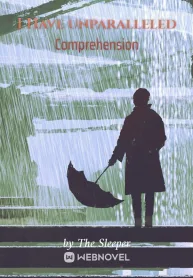Chapter 2134: Image and logic are opposite, how to judge?
Looking at the front film, the patient's diagnosis is very clear, it is primary liver cancer.
There is a 3 × 4 cm lesion on the liver, and the gallbladder is intact, not to mention the stones, and the gallbladder wall is not even thick.
And Zhao Wenhua did not insert a front piece, but two.
The first one is the pre-operative film, and there is no lipiodol in the lesion. The second film was postoperatively embolized and the date should be the surgery performed a few days ago.
In the recent film, the inside of the tumor has been necrotic, and the image of the needle can be seen. It should be radiofrequency ablation after embolization.
"It should not be gallstones." Zheng Ren said affirmatively.
After reading the film, he knew where Zhao Wenhua was tangled.
Zhao Wenhua nodded again and again, "Zheng boss, there is no gallstones before surgery. In a few days, it is impossible to have a large number of sediment-like gallstones. This is a routine logical judgment, but there is a radiological view."
Said, he sighed helplessly.
Sometimes there are errors in image and logic judgments, and most doctors will use objective image judgment as the final basis.
After all, the image is objective, and what is the significance of doing image examination for the patient. The logic of thinking, in many cases, is limited by the quality and level of the doctor.
But at the level of Zhao Wenhua, objective images can only be used as one of the reference standards, and he will not favor any objective images.
The higher the doctor's level, the more questions are considered.
Every problem that cannot be solved logically can be very rare, leading to further deterioration of the patient's condition and even death.
Even if there is a typical imaging diagnosis on the film, you have to understand it.
This is also the reason why Zhao Wenhua looked at the CT film that was very "clear".
Because he can only feel that there is a problem, but can not overturn the diagnosis of gallstones. The two are contradictory, and people are incompetent.
"Other laboratory tests." Zheng Rendao.
Lin Yuan sat on the side and was writing a medical record. She is a little sleepy, but when she listens to Zheng’s boss, she is in a good spirit.
This is the tone of the doctor at the higher level. As the youngest doctor at the bottom of the medical team of Zheng Boss, he must rush to hand over the other laboratory tests he needs.
This is the case at Harvard, and back to 912, the same is true.
However, the next second Lin Yuan was shocked.
She saw Zhao Wenhua, one of the professors of the 912 Interventional Group, bowing slightly and ran to the computer. He slid all the patient's inspection reports.
The printer slammed and spit out a page of A4 paper.
Lin Yuan looked at Zhao Wenhua strangely. He saw him anxiously. Every time the printer spit out a report, he had to get it directly.
As for it!
Although Zheng Boss is not willing to laugh at the time, it is very painful to use the hemostatic forceps to knock the sacral styloid process on the operating table, but it is still very harmonious.
Lin Yuan did not understand why the posture of Professor Zhao Wenhua Zhao was so humble. It’s just... it’s like a little doctor.
"Zheng boss, you see." Zhao Wenhua took the problematic test sheet in his hand for the first time, blowing the air, and letting the printer stay on the A4 paper to lower the temperature.
Sure enough, the patient's white blood cells are high, blood urease amylase is also high, and serum lipase is also elevated.
Reduced blood calcium, elevated blood sugar...
Zhao Wenhua has rich experience, and the checks he has done have been done. Zheng Ren is also not very picky.
“Does the patient have a history of diabetes?” Zheng Ren asked.
"No." Zhao Wenhua answered the first time.
Without a history of diabetes, blood sugar is elevated, and blood calcium is reduced, which is one of the clinical tests for typical acute pancreatitis.
Is it a postoperative stress response that leads to cholecystitis and acute pancreatitis? Zheng Ren looked through the test list and thought about it.
Although he thought so, he did not make simple and rude conclusions.
The patient's test list and imaging examination point is very clear - acute gallstones, acute pancreatitis.
but!
There is still no way to explain how so many sand-like stones come.
If the gallbladder wall is rough and cholecystitis, it is estimated that Zheng Ren will give up and ponder. It can be found in the gallbladder from scratch, and there are a lot of sediment-like stones in a few days. How do you think it is not right?
Moreover, after the operation, even if the diet is irregular, the family will take care of them at this time, and they can eat and eat.
eccentric.
Zhao Wenhua looked at Zheng Ren, and he was quite expecting.
"Talk about the patient's situation." Zheng Ren stood in the position of reading the film, holding his arms, looking at the film seriously, faintly said.
The little doctor of the Zhao Wenhua group just wanted to speak and was interrupted by Zhao Wenhua.
"This is the case, Zheng boss." Zhao Wenhua, like a lower-level doctor, began to report his medical history.
"The patient came to our hospital 1 week ago and the initial diagnosis was liver cancer. I went out of the clinic and took the patient in. I was treated with interventional embolization and radiofrequency ablation for liver cancer 3 days ago. There is a film that is left after the interventional embolization. Image."
Zheng Ren nodded and motioned to know.
"The patient's recovery after surgery is not bad. I suddenly complained of severe abdominal pain in the early morning. I have a CT scan and found gallbladder stones and pancreatitis. After the consultation, the diagnosis of hepatobiliary surgery is also the same. It is recommended for symptomatic treatment."
"But I can see the film and think it is a problem." Zhao Wenhua is very cautious. "The patient is not in a good state now, and the pain has not been alleviated."
"Are you giving an analgesic?"
"I didn't give it to you, and I still didn't want to understand something."
Zheng Ren nodded.
If you don't understand, give an analgesic, that is to die.
wrong! Just looking at the test list, it seems that there is a problem, I passed by, I did not pay much attention.
Zheng Ren doubted and picked up the test list again and looked at it one by one.
Soon, he found the problem. The patient's blood routine white blood cells are high, which can be used as an auxiliary diagnostic evidence for cholecystitis and acute pancreatitis.
However, the patient's hemoglobin has dropped to 76g / L, and the preoperative hemoglobin is normal.
"Anemia? Professor Zhao how do you think about it Zheng Ren asked.
Zhao Wenhua shook his head a little.
No matter whether it is radiofrequency ablation or interventional embolization, it will not cause anemia.
Interventional embolization will not be said, a needle eye on the thigh femoral artery, then the guide wire, catheter enter, embolization treatment inside the blood vessel. There are very few complications of bleeding, because the embolization itself is one of the hemostasis treatments.
In the case of radiofrequency ablation, the RF needle is not thick, and it is inserted into the liver. When it is extracted after ablation, the RF needle is heated to avoid needle transfer.
While killing the tumor cells, the needles of the puncture will be "hot" again. Even if there is capillary bleeding, it is like electric burning, and the bleeding stops.
There was no anemia before surgery, and there was no first review after surgery. Progressive anemia occurred only in the early hours of the morning.
This is a particularly suspicious point.
Sogou reading URL:
There is a 3 × 4 cm lesion on the liver, and the gallbladder is intact, not to mention the stones, and the gallbladder wall is not even thick.
And Zhao Wenhua did not insert a front piece, but two.
The first one is the pre-operative film, and there is no lipiodol in the lesion. The second film was postoperatively embolized and the date should be the surgery performed a few days ago.
In the recent film, the inside of the tumor has been necrotic, and the image of the needle can be seen. It should be radiofrequency ablation after embolization.
"It should not be gallstones." Zheng Ren said affirmatively.
After reading the film, he knew where Zhao Wenhua was tangled.
Zhao Wenhua nodded again and again, "Zheng boss, there is no gallstones before surgery. In a few days, it is impossible to have a large number of sediment-like gallstones. This is a routine logical judgment, but there is a radiological view."
Said, he sighed helplessly.
Sometimes there are errors in image and logic judgments, and most doctors will use objective image judgment as the final basis.
After all, the image is objective, and what is the significance of doing image examination for the patient. The logic of thinking, in many cases, is limited by the quality and level of the doctor.
But at the level of Zhao Wenhua, objective images can only be used as one of the reference standards, and he will not favor any objective images.
The higher the doctor's level, the more questions are considered.
Every problem that cannot be solved logically can be very rare, leading to further deterioration of the patient's condition and even death.
Even if there is a typical imaging diagnosis on the film, you have to understand it.
This is also the reason why Zhao Wenhua looked at the CT film that was very "clear".
Because he can only feel that there is a problem, but can not overturn the diagnosis of gallstones. The two are contradictory, and people are incompetent.
"Other laboratory tests." Zheng Rendao.
Lin Yuan sat on the side and was writing a medical record. She is a little sleepy, but when she listens to Zheng’s boss, she is in a good spirit.
This is the tone of the doctor at the higher level. As the youngest doctor at the bottom of the medical team of Zheng Boss, he must rush to hand over the other laboratory tests he needs.
This is the case at Harvard, and back to 912, the same is true.
However, the next second Lin Yuan was shocked.
She saw Zhao Wenhua, one of the professors of the 912 Interventional Group, bowing slightly and ran to the computer. He slid all the patient's inspection reports.
The printer slammed and spit out a page of A4 paper.
Lin Yuan looked at Zhao Wenhua strangely. He saw him anxiously. Every time the printer spit out a report, he had to get it directly.
As for it!
Although Zheng Boss is not willing to laugh at the time, it is very painful to use the hemostatic forceps to knock the sacral styloid process on the operating table, but it is still very harmonious.
Lin Yuan did not understand why the posture of Professor Zhao Wenhua Zhao was so humble. It’s just... it’s like a little doctor.
"Zheng boss, you see." Zhao Wenhua took the problematic test sheet in his hand for the first time, blowing the air, and letting the printer stay on the A4 paper to lower the temperature.
Sure enough, the patient's white blood cells are high, blood urease amylase is also high, and serum lipase is also elevated.
Reduced blood calcium, elevated blood sugar...
Zhao Wenhua has rich experience, and the checks he has done have been done. Zheng Ren is also not very picky.
“Does the patient have a history of diabetes?” Zheng Ren asked.
"No." Zhao Wenhua answered the first time.
Without a history of diabetes, blood sugar is elevated, and blood calcium is reduced, which is one of the clinical tests for typical acute pancreatitis.
Is it a postoperative stress response that leads to cholecystitis and acute pancreatitis? Zheng Ren looked through the test list and thought about it.
Although he thought so, he did not make simple and rude conclusions.
The patient's test list and imaging examination point is very clear - acute gallstones, acute pancreatitis.
but!
There is still no way to explain how so many sand-like stones come.
If the gallbladder wall is rough and cholecystitis, it is estimated that Zheng Ren will give up and ponder. It can be found in the gallbladder from scratch, and there are a lot of sediment-like stones in a few days. How do you think it is not right?
Moreover, after the operation, even if the diet is irregular, the family will take care of them at this time, and they can eat and eat.
eccentric.
Zhao Wenhua looked at Zheng Ren, and he was quite expecting.
"Talk about the patient's situation." Zheng Ren stood in the position of reading the film, holding his arms, looking at the film seriously, faintly said.
The little doctor of the Zhao Wenhua group just wanted to speak and was interrupted by Zhao Wenhua.
"This is the case, Zheng boss." Zhao Wenhua, like a lower-level doctor, began to report his medical history.
"The patient came to our hospital 1 week ago and the initial diagnosis was liver cancer. I went out of the clinic and took the patient in. I was treated with interventional embolization and radiofrequency ablation for liver cancer 3 days ago. There is a film that is left after the interventional embolization. Image."
Zheng Ren nodded and motioned to know.
"The patient's recovery after surgery is not bad. I suddenly complained of severe abdominal pain in the early morning. I have a CT scan and found gallbladder stones and pancreatitis. After the consultation, the diagnosis of hepatobiliary surgery is also the same. It is recommended for symptomatic treatment."
"But I can see the film and think it is a problem." Zhao Wenhua is very cautious. "The patient is not in a good state now, and the pain has not been alleviated."
"Are you giving an analgesic?"
"I didn't give it to you, and I still didn't want to understand something."
Zheng Ren nodded.
If you don't understand, give an analgesic, that is to die.
wrong! Just looking at the test list, it seems that there is a problem, I passed by, I did not pay much attention.
Zheng Ren doubted and picked up the test list again and looked at it one by one.
Soon, he found the problem. The patient's blood routine white blood cells are high, which can be used as an auxiliary diagnostic evidence for cholecystitis and acute pancreatitis.
However, the patient's hemoglobin has dropped to 76g / L, and the preoperative hemoglobin is normal.
"Anemia? Professor Zhao how do you think about it Zheng Ren asked.
Zhao Wenhua shook his head a little.
No matter whether it is radiofrequency ablation or interventional embolization, it will not cause anemia.
Interventional embolization will not be said, a needle eye on the thigh femoral artery, then the guide wire, catheter enter, embolization treatment inside the blood vessel. There are very few complications of bleeding, because the embolization itself is one of the hemostasis treatments.
In the case of radiofrequency ablation, the RF needle is not thick, and it is inserted into the liver. When it is extracted after ablation, the RF needle is heated to avoid needle transfer.
While killing the tumor cells, the needles of the puncture will be "hot" again. Even if there is capillary bleeding, it is like electric burning, and the bleeding stops.
There was no anemia before surgery, and there was no first review after surgery. Progressive anemia occurred only in the early hours of the morning.
This is a particularly suspicious point.
Sogou reading URL:







